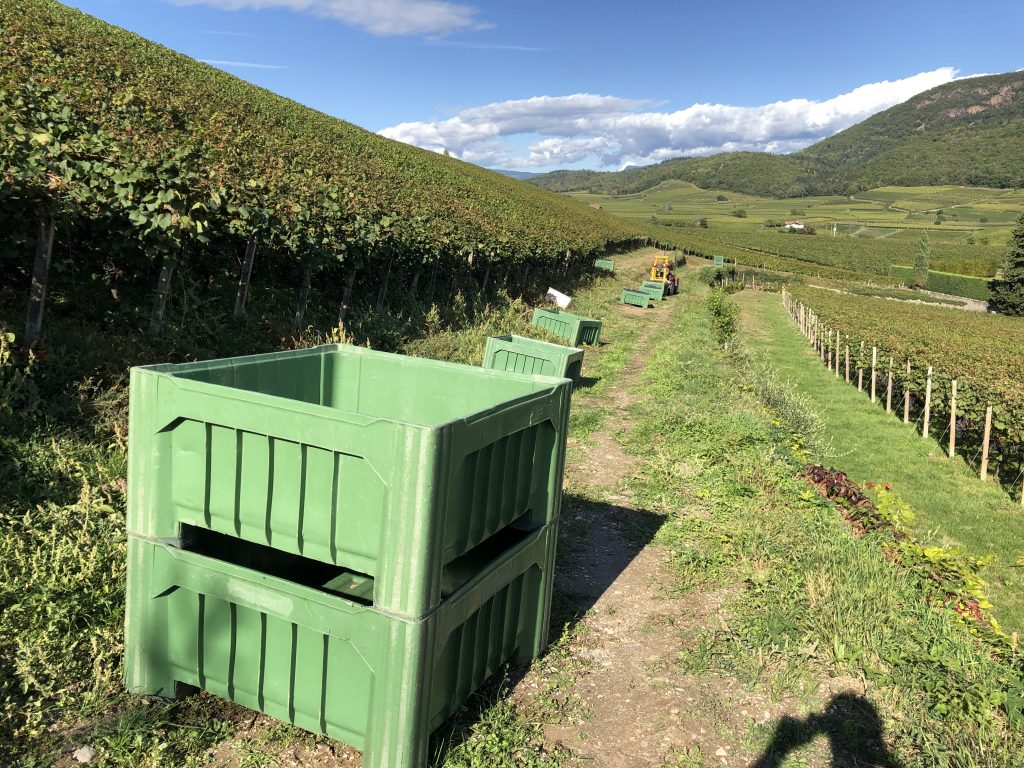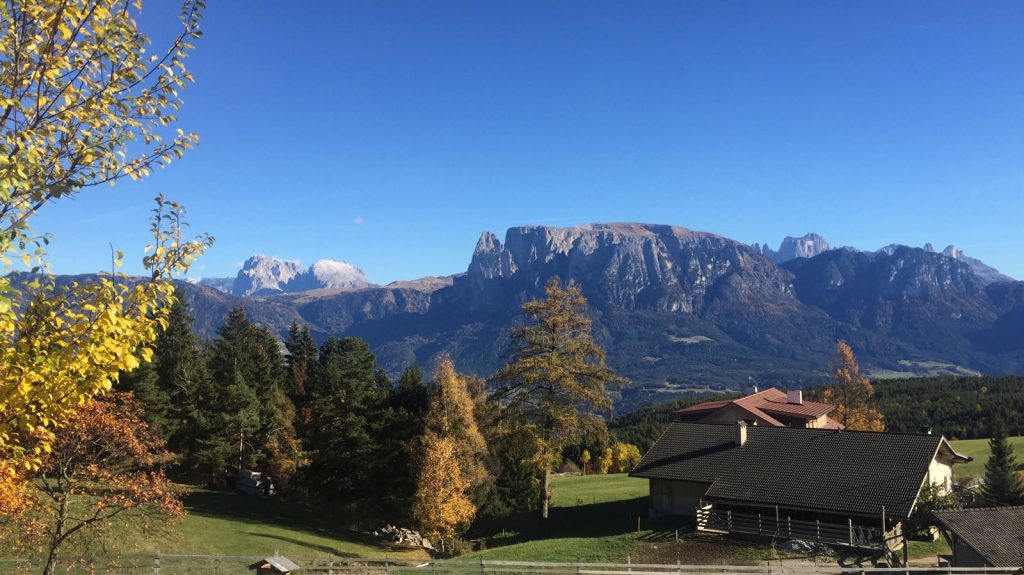I’ve decided to take a small break from the Bayern Local Series, to share with you what I consider to be one of the most beautiful places on this planet.
Imagine deep, green valleys, covered in vineyards, orchards, castles and charming villages, with a sunny Mediterranean climate allowing for the growth of palm and (in some places) olive trees. Imagine rugged mountains surrounding these valleys, their jagged peaks providing postcard-perfect views in almost every direction. Imagine that this same place offers a mix of Italian and Germanic cultures found nowhere else in the world (apart from, perhaps, the Swiss Canton of Ticino). This is South Tyrol’s wine region, and it is not a destination to be missed for lovers of nature, outdoor activities, breathtaking scenery, and excellent food and wine.
I could easily blog about South Tyrol for months, and if I had to pick one place in the world as my favorite destination, this region would have to be it. I’ll perhaps address more of what the larger area has to offer in the future, but for now I’ll stick to the valleys of the Wine Road and the low mountain landscapes overlooking them.
The Basics
South Tyrol (Südtirol in German, Alto Adige in Italian) is a province in Italy’s far north, just south of the Austrian state of Tyrol. Together with Trentino it makes up the autonomous region of Trentino-Alto Adige. It is an area of rugged mountains, called the Dolomites, but also valleys of varying altitudes and climates. The region is officially trilingual (German and Italian, of course; Ladin, spoken by about 5% of inhabitants, is the third language), and in South Tyrol practically every village has two names as a result of this bilingual status. Trentino is majority Italian speaking, while in South Tyrol the predominant language is German.
The vineyards are concentrated in the valleys and hillsides south of Bolzano/Bozen, as well as between Bolzano and Merano/Meran; some wine production also occurs to the northeast of Bolzano. It is not a heavily populated province; Bolzano has a population of approximately 110,000 and is the largest city by far. Most settlements consist of small towns and villages of less than 15,000 people.



A Truly Unique History
South Tyrol’s recent history is complex and rather tumultuous, but a brief overview is very important to understanding the province and its people. Prior to World War I South Tyrol was part of the Austro-Hungarian Empire, and was both culturally and linguistically Germanic. After the end of WWI it was ceded to Italy. Later, Mussolini (with Hitler’s blessing) implemented “Italianization” programs of both incentivized resettlement of Italians from other regions and extreme subjugation of the German and Ladin languages.
For decades after the incorporation of South Tyrol into Italy the province was unstable; it was the topic of international dispute between Italy and Austria, and at times violence flared. Gradually a series of agreements were put into place that settled the dispute, the suppression of German and Ladin ended and the region was granted a large degree of autonomy in 1972. These actions allowed the multicultural reality of the province to stabilize, and what has so far been a lasting peace emerged.
Despite its unstable past, today’s Trentino-Alto Adige is the most prosperous region of Italy and retains close economic ties to Tyrol (Austria) through a cross-border joint economic entity. The linguistic (mother tongue) distribution of South Tyrol as of the 2011 census was approximately 62% German, 23% Italian, 4% Ladin and 11% other languages. However, numerous local political parties and leaders have in recent years been vocal about their desire to secede from Italy and reunite with Austria. This seems unlikely to occur, but the continuing existence of such sentiments is a reminder of the region’s past.


Food and Wine
Fitting right in with its unique history, the cuisine of South Tyrol is a tantalizing blend of Italian and Austrian influences, where Pizza and pasta dishes coexist with Knödel (dumplings) and Gerstensuppe (Barley soup) on menus in local restaurants. The cuisine definitely tends toward the hearty side, but with so many active pursuits right outside your door, the opportunity to burn off those extra calories is always close at hand. The people also take a lot of pride in their local cuisine, and you can pretty much universally expect freshness in both ingredients and preparation.
While the cuisine is a bit more meat-heavy than some others in Europe, vegetarians will generally find enough choices to be satisfied. Vegans may be more challenged in smaller towns and more traditional establishments, however, and may want to consider renting an apartment where the possibility exists to cook something independently should the need arise.

The wine of the region is diverse, and each village has its own specialties due to the variety in climatic conditions and sun exposure. Local grape varietals such as Lagrein and Vernatsch (Schiava in Italian) are grown alongside other standard varietals such as Gewürztraminer, Sauvignon Blanc (Weissburgunder), Pinot Noir (Grauburgunder) and Cabernet Sauvignon. White wine grapes account for about 58% of production, and red wine the remaining 42%.
A unique feature of the region is the centuries old tradition of Törgellen. Törgellen is celebrated in the Autumn, with young wine and local food specialties, including the tasty Gerstensuppe (barley soup) and lots of roasted chestnuts. People often go on walks through the hillsides and stop to eat and drink wine at one or multiple establishments. Törgellen evenings in quaint farmhouse restaurants are typical as well, where you pretty much feel as if someone has opened their own personal dining room to welcome you. Whichever way one goes about it, this is a fun tradition, and it takes place at a beautiful time of year. Törgellen can be enjoyed roughly between early October and mid-November.


In the second post in the series, I’ll address the plethora of outdoor activities this area offers, along with some practical advice for planning a visit.
Coming soon!






This Post Has One Comment
Pingback: South Tyrol’s Wine Region: Part 2 of 2 – Wanderlust for Life